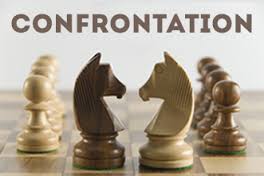 One of the facts about management that seems contrary to conventional wisdom is that most managers are really “nice” guys who do not like confronting their subordinates and holding them accountable. These managers consider this part of management to be a real hassle, something they would rather avoid. They believe this is an unnecessary evil and something they have to put up with as part of the heavy burden of management. Managers who think like this of course are never really going to be able to hold any one accountable. Then there is the mean-spirited manager who is completely task oriented, and who does not give a damn about people. Managers with some degree of balance between their concern for people and concern for holding the same people accountable for their performance are unfortunately a bit of a rarity.
One of the facts about management that seems contrary to conventional wisdom is that most managers are really “nice” guys who do not like confronting their subordinates and holding them accountable. These managers consider this part of management to be a real hassle, something they would rather avoid. They believe this is an unnecessary evil and something they have to put up with as part of the heavy burden of management. Managers who think like this of course are never really going to be able to hold any one accountable. Then there is the mean-spirited manager who is completely task oriented, and who does not give a damn about people. Managers with some degree of balance between their concern for people and concern for holding the same people accountable for their performance are unfortunately a bit of a rarity.
So how does a manager strike a balance and make the process of confronting subordinates about their behavior or performance a bit easier and less stressful for both parties?..
One such tool that makes the confrontation process easier and that can also provide some motivation in others is what is referred to as the “ART of Confrontation”. ART is an acronym that can be decoded as:
–Appreciate and acknowledge
–Restate commitment to the person
–Track the agreement
This is how ART works:
1- Appreciate
First, appreciate and acknowledge the subordinate or colleague in terms of the overall value he/she offers to the organization and offer some examples of some behavior or performance or a situation where this person really impressed you. I used to think that offering such appreciation in the beginning before discussing the issue of real concern was somewhat artificial and liked the more direct approach of getting to the point immediately. But appreciation and acknowledgment as I have discovered is essential in making the other person feel more comfortable and able to accept the feedback that will follow.
2- Restate
This is an opportunity to restate your commitment to the subordinate or colleague in terms of your belief in their capability and potential. You can say things like “I have always believed in you and trusted you” or “I am absolutely determined to help you succeed”. This step ensures the “big picture” of why the conversation is taking place is clear. It also ensures the conversation is not seen as a “reprimand” or a way for the manager to let off steam.
3- Track
This is the final step in the ART process. The conversation concludes with an agreement by the subordinate to behave/perform differently and this needs to be tracked and monitored. The agreement can’t be just your words. It has to be co-authored so that it creates ownership and accountability. When the agreement is reviewed, both sides assess success/failure/variation and create another agreement for the way ahead.
They say that a manager’s job is to manage and motivate people. This is a misconception because no manager can manage or motivate another person. Only that person can manage and motivate himself/herself. A manager is there to manage agreements about behavior and performance of other people.

Leave a Reply